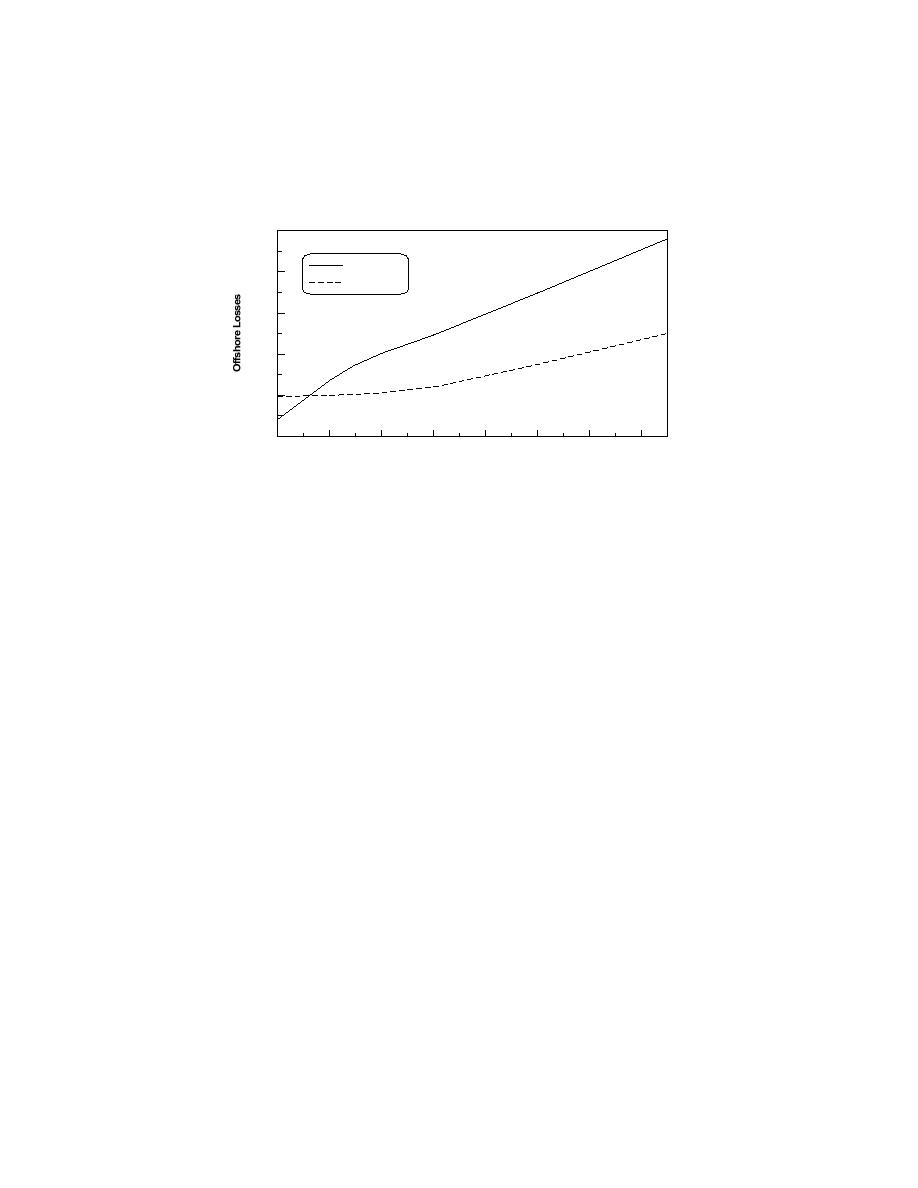
2630
COASTAL ENGINEERING 2004
50
1000 m3
40
Qoff /Qg(%)
30
20
10
0
1
2
3
4
5
6
7
8
ξ
Figure 7. Offshore transport losses, expressed in 103 m3 and in percentage of the gross longshore
transport rate Qg half-way between the groins, in a groin compartment as a function of the
morphodynamic response factor ζ.
the offshore losses. Thus, as the shoreline orientation is preserved over time, the
offshore loss through rip currents per wave cycle will not decrease with time. It
should be noted, however, that diffraction from the groin tips is not considered
in these simulations. If it were considered, there would probably be a gradual
reduction in loss rate as erosion continues and the distance between the shoreline
and the outer groin tips increase.
6.
Concluding Discussion
The present study is based on the observation that rip currents are typically
induced in the vicinity of groins and jetties in situations where there is a large
difference in orientation between the shoreline and the breaking waves.
Analytic and numerical solutions were applied to illustrate and quantify this
phenomenon.
Previous studies have shown that not only the net longshore transport rate
but also the gross rate is important for the shoreline response to groins and
jetties. These rates and their relation are primarily associated with variability of
wave directionality. The present study takes this discussion further in
introducing the time scale or frequency of these changes. The difference in
orientation between the hydrodynamic forcing (breaking waves) and the
morphodynamic response (shoreline) may be interpreted as a phase shift
between two systems that may have drastically different temporal scales.
For an open-coast system with a single groin or jetty exposed to an
instantaneous change in the direction of the forcing, the critical time scale is



 Previous Page
Previous Page
